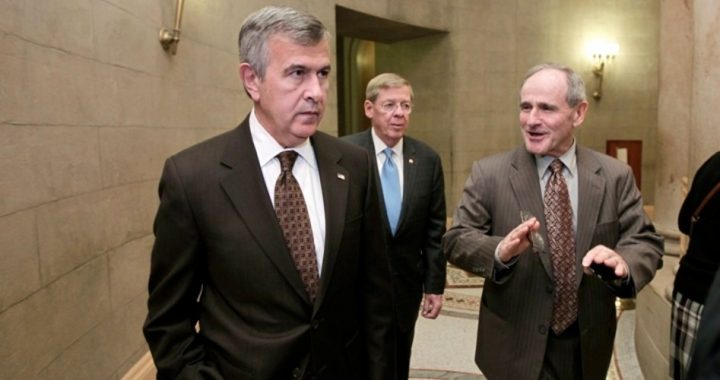
Congressional lawmakers and Midwest ranchers are pushing back against the Environmental Protection Agency (EPA) after discovering that federal authorities are flying over private lands to monitor farm operations. The agency began using the aerial surveillance back in 2010 to monitor cattle ranchers that may be in violation of federal clean-water standards and other environmental regulations.
Officials have described the practice as a cost-effective method of using manned flights to monitor a vast geographical area of animal feeding operations. If they identify livestock waste running into a lake or stream, they then pursue an on-ground investigation. Since the program was launched, the agency has dispatched nine flights in both Iowa and Nebraska, prompting 39 enforcement actions in Iowa and another 14 in Nebraska.
EPA Regional Administrator Karl Brooks, who oversees Iowa, Missouri, Kansas, and Nebraska, said the agency uses aerial surveillance as a way to reduce costs by curbing the number of on-ground inspections. In describing the program’s “cost efficiency,” Brooks stated, “With one combined animal feeding operation inspection costing upwards of $10,000, and Region 7 responsible for improving water quality in about 1,800 miles of impaired Nebraska waters, across 50,000 square miles, EPA uses tools, like airplane flights, to focus our resources and compliance efforts where they are needed most.”
Naturally, environmental groups around the country have lauded the initiative, claiming the practice is vital to ensuring environmental integrity in the U.S. cattle industry. Scott Edwards, a spokesman for the environmental group Food and Water Watch, demands that state and federal governments must collaborate to curb water pollution, but warned of overly-dramatic criticisms from the industry. “There is always this over-the-top pushback, and it’s across the country that agriculture needs to somehow be different,” he charged.
The EPA is hosting a public meeting Monday night in Lexington, Nebraska to discuss the agency’s controversial practice of inspecting livestock feeding operations. Among cattle farmers and feeders, particularly those in Nebraska, the EPA’s recent efforts to ease concerns over the practice seem to have failed. “We continue to think they are intrusive, a waste of money and not necessary,” Kristen Hassebrook, Director of Natural Resources for Nebraska Cattlemen, said last week.
Ranchers who oppose the program say they’re not trying to conceal any wrongdoing, but that they oppose the EPA’s secretive approach to spying on their private businesses. “For me, it just creeps into the ‘Big Brother is watching you’ area, to where the government just feels like it’s getting more and more intrusive,” said Buck Wehrbein, a cattle feeder in a town 30 miles west of Omaha.
For many feeders, the flyovers are costing them more money than they are already doling out in regulation compliance, as federal standards are undermining state environmental regulations, which farmers have already spent heaps of money to comply with. For example, some farmers are worried they will have to pour more money into manure-control measures to meet federal regulations, after having already invested heavily in measures to comply with state regulations.
But cattle feeders are not alone in their opposition, as congressional Republicans have proposed legislation to halt the practice. After receiving piles of complaint letters from their constituents, congressional lawmakers responded with inquiries and legislative proposals to curb the intrusive practice. Sen. Mike Johanns (R-Neb., left in picture above), who was the United States Secretary of Agriculture from 2005 to 2007, for instance, proposed an amendment to a farm bill that would have halted the flights altogether, but it fell four votes short, with most Republicans supporting the proposal and 10 Democrats offering their support.
Critics have been further angered by the fact that federal officials have stonewalled many attempts to disclose more detailed information on the program. “EPA has been deliberately ambiguous when it comes to the size and scope of this program,” Sen. Johanns affirmed in a statement. “EPA must be honest about this program or cease it entirely, and I will continue pressing for this information on behalf of all concerned farmers and ranchers.”
Tensions between the EPA and Nebraska’s congressional delegation have become especially contentious. “Number one, EPA has a terrible reputation in the agricultural world. They’re regarded as aggressive, hard to deal with. So this only compounds that problem,” Johanns said during a phone interview in early June. “The second thing, why didn’t they tell somebody in the congressional delegation what their plans were?”
Responding to criticisms about the legality of the EPA’s flyover program, agency officials referred to similar measures taken by federal agencies that have received favorable rulings. “Courts, including the Supreme Court, have found similar types of flights to be legal (for example to take aerial photographs of a chemical manufacturing facility) and EPA would use such flights in appropriate instances to protect people and the environment from violations of the Clean Water Act,” an EPA statement read.
Of course, if it’s legal, why the secrecy? As Mr. Johanns recently asserted, “Why are they just out there flying Nebraska feedlots? How are they using the information? Why does the EPA feel they need to be so secretive about this?”
Photo: Sen. Mike Johanns (R-Neb.) left, Sen. Johnny Isakson (R-Ga.) center, and Sen. James Risch (R-Idaho) right, Dec. 16, 2011, at the Capitol in Washington: AP Images



